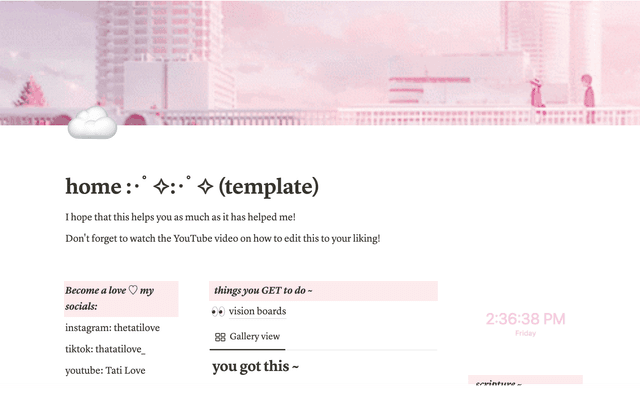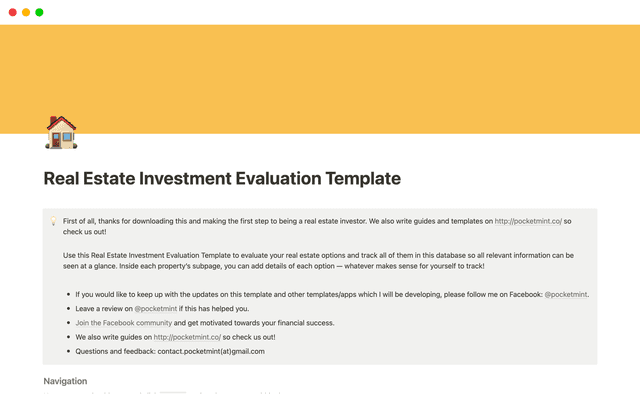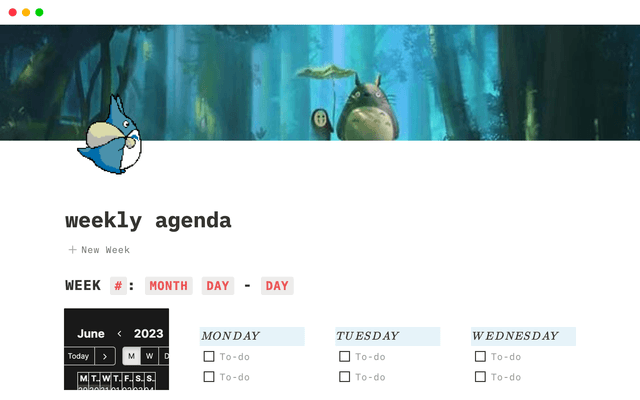Database properties help organize your team’s information
Add context to the pages in your database with customizable properties. This helps you and your team organize information so that it’s immediately actionable.

- Basic properties for every database
- Need to store different types of information? Use these properties
- Advanced properties for better project management
- Display only the properties you need to see
Properties are the backbone of databases. They help you organize the pages in your database based on criteria you decide.
Want to make sure projects all get a deadline? There's a property for that. Want to assign a project manager? Property for that too. What about tagging the type of project? Yep, properties do that.
With properties, you can get a snapshot view of information associated with each page in a database — and maybe even more importantly, filter data based on different property types.
There are a couple of ways to add a property: within a database page or by selecting Properties on the top right of your database. Click + Add a property in either scenario, name the property, and select the type you want. Let's get into how to use them.

Datenbanken – jetzt noch besser!
Einige Hinweise in dieser Anleitung beziehen sich möglicherweise auf ältere Notion-Versionen. Denn im März 2022 haben wir unsere Datenbanken grundlegend überarbeitet. So kann es passieren, dass Funktionen und Erscheinungsbild geringfügig von dieser Beschreibung abweichen. Dieser Leitfaden beschreibt die neuen Datenbankfunktionen und Änderungen.
While databases can house everything from engineering sprints to content calendars, there are key properties that are table stakes for most Notion databases. These help tell you what’s happening, who’s responsible, and when it’s due (or just about anything else you need to know about a database page).
Here are some of the basic properties you can use to organize almost every database:
Name — in a table database, the first column shows "Name" at the top. This is where you'll name the pages that go in your database. Each page also contains all the page’s properties and lets you store information like drafts, images, code, and more.
Select — customize how you tag projects in a database, like by priority, project type, teams, or status. Maybe HR has an applicant tracking database. Use a
Selectproperty to assign stages, like "Onsite Interview“ or "Offer.“ You can quickly create new tags by clicking on the cell for the property. And any tags you've created will show up as a dropdown list to choose from.Multi-select — this is just like a
Selectproperty, but you can assign multiple attributes to a page. Going back to the applicant tracking example, you can add aMulti-selectproperty called “Skills” for all the proficiencies you gathered from a candidate’s resume and interviews.

Person — tag teammates with this property, whether they're the project owner or participating in some regard. This ensures everyone knows who's responsible for what.
Date — set deadlines or establish a start and end date for completing your project. Your engineering team might use date properties for feature launches, but also for the two-week sprints to build these features. You can set each of these separately, then create a timeline view organized by ship dates and execution dates.
We’d be remiss not to boards — which group pages into columns based on Select, Multi-select or Person properties.
For example, you might group a board by project manager (a Person property) to see what everyone has on their plates. You might also want to group pages by their status (a Select property) like "Not started“ or "In progress.“ Making multiple database views with this information also helps you get a quick download of projects based on what you need.
Together, these properties give your team a simple way to organize large sets of information.

Create views to surface relevant database information
Add a little more texture to your properties by using them to hold all the materials you might need as part of the work at hand.
Files & media — upload relevant files right into this property. For example, you can add the hero images for any blog posts or social media content and display it in gallery view. Using a property for this information also makes it easy to download, instead of needed to find it in the body of the pages.

Text — use a text property to summarize a page's content or provide high-level details. That way, you can quickly grab the essential information right from the database instead of dipping into the page itself. Your sales team might use this property to give a couple lines about your competitors in an audit to reference during sales calls.

Checkbox — ensure project owners complete specific items. If you develop SEO-polished content, add checkboxes to ensure writers hit the target keywords, use internal links, and other on-page optimizations. Then add a filter where unchecked items don’t show in your database. That way, you see in seconds what content still needs work.
URL, Email, Phone — quickly follow up with prospects by including every lead’s contact information into your CRM databases (and here's a CRM template you can use!).

Maybe you want to connect two databases, or see when a page in a database was last edited. These advanced properties help your team get the most out of databases.
Relations — connect two databases together with relations to get the full picture of your work. For example, your product team might be launching a new feature, with all the information housed in a page in your roadmap database. You can use a relation to connect your roadmap to a database of your team’s meeting notes, meaning all relevant meetings about that project are accessible right on the project’s page.
Rollups — this helps your aggregate data based on relations. Let's say you have a database of tasks that need to be completed prior to releasing a new feature, with each task having a checkbox. You can rollup these tasks to see the progress being made toward launch. Learn more about rollups.
Created time — as soon as a page is created, this will timestamp it with the date and time. This helps when you're cleaning up a database to remove outdated project specs or research guidelines.

Created by — see who created pages, which helps when you're organizing pages based on their creators. For example, you can use this property to filter meeting notes based on the ones you drafted.
Last edited time & by — auto-populate the timestamp that a page was last edited (and by who). When you’re project managing a page where many people are collaborating, this can be especially helpful.
Formula — show progress on a project, get votes on questions for your next all-hands meeting, calculate taxes, and more by inserting formulas into your database. They allow your team to run calculations and functions based on other properties.
Like your favorite jacket, you may not need certain database properties around all the time, but you want them handy.
Toggle on/off properties depending on what you want to see by hitting Properties at the top of your database. You can also use these in different views — like in your project roadmap you might only want to see the DRI and launch date properties, or in your calendar view, you may only need to see the project type.
To further customize your properties, you can choose which ones are hidden or visible. Inside your database’s project pages, hit the ⋮⋮ to the left of the property and choose Hide property. Here, you can select whether the property is always visible, always hidden, or only visible when it’s in use.

Resources for your database
Everything you need to know about databases
How to create linked databases
When to use different types of database views

Templates for your databases
Gibt es etwas, das wir nicht abgedeckt haben?








